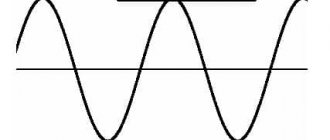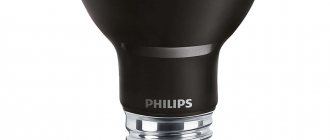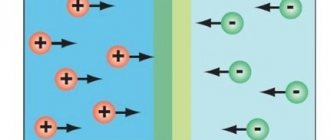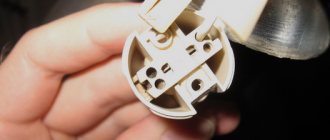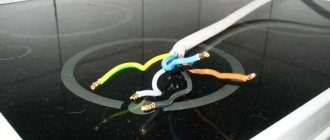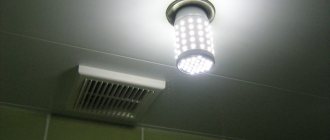Lamps make a slight noise, hum or crackling during operation. Typically, these sounds are a design feature of lighting devices. For example, almost all familiar fluorescent lamps make sounds to one degree or another.
However, when an LED lamp hums, the design of which does not have large transformers or chokes, many people have a logical question - why does this happen and what is the source of the sound. Let's take a closer look at this issue.
For what reasons can lamps in a chandelier burn out?
We will give the most likely and common causes of this problem.
Let's consider the proposed options for eliminating it and the possibility of extending the service life of lighting devices. 1) The first reason why light bulbs in a chandelier quickly burn out is probably bad contacts of the wiring and the lamp.
As a rule, all home lighting equipment is connected in two ways: by conventional twisting of wires or by terminal blocks.
When using twisted wires, natural oxidation of the metal occurs. As a result, over time, the resistance at the junction of the wires increases. And this, in turn, leads to voltage drops and lamp burnout. In addition, “eddy currents” arise in the twisting, which lead to interference in the power supply and the same consequences. The only possible solution in this situation is to replace the twisted wires with the terminal.
But when using a terminal block connection, you also need to know one nuance. You should not use stranded wires, since when they are secured in the terminal, the strands spread out and the contact may not be complete. Try to replace the stranded wire with a solid wire. If this is labor-intensive or impossible, then the multi-core contact can be tinned with solder and clamped into the tips.
These tips apply to absolutely all electrical contacts. Try to check the junction box, panel, switches for the quality and reliability of the connections.
2) Faulty lamp sockets or poor contacts in them are the second most “popular” reason why light bulbs in a chandelier can often burn out.
When checking lamp sockets, pay attention to the following:
— reliability and elasticity of contacts between the socket and the lamp inside,
— presence of signs of oxidative processes in the metal contacts,
- darkening or soot.
Any of these reasons leads to overheating of the lamps and their failure.
If in the first two cases it is quite easy to eliminate the cause (bend or clean the contacts), then if there is carbon deposits or darkening, it is necessary to change the cartridge itself.
Our advice: if you often have to clean contacts from oxidation or restore their elasticity, then you should completely replace the cartridge with a better one.
3) Errors in choosing the power of lamps - this is the third reason why light bulbs in a chandelier or other lamp constantly burn out.
Each lighting device is designed to operate lamps of a certain maximum power. And if you use more powerful lamps in it, this leads to undesirable consequences: contacts deteriorate and weaken, internal wiring burns out, and the material of the chandelier elements cracks (including sockets). The end result is obvious - new lamps often burn out.
To prevent such a situation, it is necessary to use lamps of the maximum power for which the cartridges are intended. Otherwise, the material of the cartridges may crack and burn out. Manufacturers indicate the permissible power in the instructions, passport and on the lamp itself in the form of a sticker.
4) Malfunction of switches or junction box can be another reason for the failure of lamps of any type.
Our advice: if on any individual lamp the lamp periodically changes brightness or winks, and you have already checked the chandelier itself and found no faults, then you need to look for the cause in the switch or junction box. Carefully inspect their insides for darkening and carbon deposits, check all contacts. If found, correct the problem immediately.
5) Increased power supply voltage or power surges also affect the operating time of any equipment in the apartment, including lighting. Halogen, energy-saving, LED lamps often burn out due to a sudden voltage surge.
You can insure against such problems by installing a voltage stabilizer at the entrance of the electrical network to the apartment.
6) Frequently turning on/off lighting fixtures can also be the reason why halogen or energy-saving light bulbs quickly burn out.
Our advice: you can protect yourself from this by installing specialized equipment that allows for smooth switching on/off of lighting devices.
We have given the most common causes of burnout of various types of lamps and possible ways to eliminate them.
But it should be noted that the quality of the light bulbs and the lamp themselves also directly affects the service life. Try to purchase lighting equipment from trusted manufacturers, of proper quality and from reliable sellers.
Main reasons
There can be many reasons why an LED lighting fixture sometimes makes noise. This includes resonance from supporting structures, sounds from additional devices, and other reasons. The appearance of a hum greatly interferes with work or rest, distracts and irritates a person.
If the hum moves into the ultra-low frequency region, serious health problems, mental disorders, anxiety and panic conditions are possible. Therefore, the causes of unwanted sounds must be identified and eliminated. Let's look at some possible and common situations .
Dimmer noise
A dimmer is a device that allows you to smoothly change the brightness of a lamp. A very convenient device, but it is often the source of noise. There are two dimmer designs, designed for traditional incandescent lamps and for LED fixtures.
If, unknowingly, a dimmer for an incandescent lamp is connected to an LED lamp, the device begins to hum, the intensity of the sound will depend on the power and the degree of inconsistency between the LED and the regulator. The way out of the situation is to replace it with a suitable dimmer.
Poor quality assembly
Poor manufacturing quality of the LED lamp is also a common cause of noise. The lamp begins to hum due to a leak in the seal (sometimes this does not happen immediately, but over time).
Interesting! In addition, a low-quality transformer may be used in the design of an LED lamp (this is typical for lamps with built-in PWM). Then the device also noticeably hums or begins to whistle. The solution to the problem is to replace the lamp with a more reliable one from a well-known manufacturer.
Other
Without exception, all dimmers hum during operation. However, with high-quality assembly of the device, the operating noise level is low and is not noticeable by humans. When installed in plasterboard boxes or other structures capable of resonating in the broadband range, the lamps begin to hum much louder. Possible causes of resonance:
- tight contact of the lamp with the walls of the box;
- the block with the power wire comes into contact with the ceiling slab, transmitting vibration to it;
- the devices are installed too close to the metal guides that form the frame of the box;
- the walls of the box are not tightly assembled and begin to rattle or hum when the lights are turned on.
How to properly connect a light bulb to the wires?
Before connecting the light bulb to the wires, you should take care of safety precautions and turn off the power supply. In order to carry out this action correctly, you must adhere to some specific rules. First of all, if there is no recess in the walls for a switch, then one must be made.
Next, you will have to stretch the electrical wires to the desired location; you need to pull them from the junction box. As a rule, these two wirings are well known to everyone - zero and phase. The above wires will have to be laid open or closed. In the first of the listed options, the gasket is made in special plastic boxes placed on top of the wall.
What causes light bulbs to explode?
The very reason for the explosion of the light bulb lies in the fact that over time, as a result of depressurization, the discharged environment inside the lamp is sharply filled with pressure, the bulb is destroyed, which is often accompanied by flying fragments in different directions of the room.
This may be the case when modern houses are supplied with a sufficiently high voltage that an ordinary light bulb cannot withstand. If this is the problem, then you will have to look for specialized lamps designed for use specifically at high voltage.
Another reason may be low quality products. For an example, see the picture below. This is a completely new light bulb that I bought and could not install in the chandelier, when I started to inspect it, it turned out to have a crooked base and a hole in the thread.
Unfortunately, at present, domestic manufacturers lag behind their foreign colleagues in terms of lamp quality, and the price of the issue is insignificant. For each of the lamps there is a passport, which indicates the power of the light bulbs for this model. These instructions must be followed, otherwise the bulbs will flicker, not provide enough light, or explode and burn out.
We also note that the switches must also be in good working order. If the contact moves away from them, this again affects the performance of the light bulb. In order to avoid such moments when light bulbs explode, it is worth switching to using halogen lamps. They integrate a special protection unit that takes care of voltage surges in the network. It is best to replace old switches with rheostat ones, which can reduce the voltage to the light bulb itself when it is turned on.
External influence factor
Unfortunately, despite the use of modern technologies and devices for protecting electrical appliances, today it is impossible to guarantee with 100% certainty the proper operation of LED lamps when exposed to external forces. Both fluorescent lamps and LED lamps are characterized by a reaction to static voltage that occurs during thunderstorm activity. And if a lightning charge enters a house unprotected by a lightning rod, in 100% of cases the diode light bulbs will burn out.
Video: How to choose LED lamps. Using a mobile phone!
Video: Connecting LED and Energy Saving Lamps to a Backlit Switch
Video: LED lamps glow when turned off. What to do!
Main conclusions
Humming or whistling noises that occur when LED luminaires operate are a consequence of the use of unsuitable regulators or poor quality assembly. In addition, the backlight often hums due to the resonance of the supporting structures with which it is in contact.
All options should be examined by elimination to determine the cause of the extraneous noise. If you know how to find out the reason for the hum of an LED lamp, share it in the comments on this page, it will be valuable and necessary information for all owners of LED devices.
How to choose a chandelier fan?
When dealing with a hybrid device, you need to pay attention to several parameters when purchasing
For a ceiling paddle light, luminous power and cooling characteristics are important. Here is a list of the main criteria:
Here is a list of the main criteria:
- The power of the lamp used must correspond to the area of the room.
- A ceiling fan chandelier with a remote control makes it easy to switch lighting modes and adjust the rotation speed of the blades.
- The diameter of the blades and engine power are selected taking into account the living space. Size 762 mm is suitable for rooms up to 9 m², 1066 mm - for a spacious room up to 16 m², 1320 mm - for a studio apartment up to 32 m².
- Be sure to take into account the design of the lamp and the style of decoration of the premises.
- The minimum room height for installing a chandelier-fan is 2.1 m.
How to remove the flickering of a budget LED lamp with your own hands: 3 schemes
Above in the text, I tried to focus your attention on the fact that you should not purchase cheap LED lamps. But, if they have already been purchased, then you can try to improve their performance
Method No. 1. Increasing the capacity of the equalizing capacitor
A simple power supply for an LED lamp after a voltage divider or input transformer rectifies the alternating signal with an electrolytic capacitor C, which smoothes out ripples.
Their influence on the quality of the equalized signal can be reduced by increasing its capacitance. To do this, it is permissible to connect an additional capacitor C1 in parallel with the windings C.
The second option is to replace capacitor C with another one of higher capacity. The principle here is: the more, the better. But, without fanaticism. The fact is that all this electronic equipment is located in the lamp base, and the dimensions there are limited.
You can, of course, try to bring the additional capacitor out with wires, as a separate module. But how convenient will such a design be during operation?
I showed this solution on the diagram with dotted lines and highlighted the added elements in lilac.
Here I also indicated a place to connect an additional resistor R1.
Method No. 2. Limiting the current through the LEDs with a current suppression resistor
Connecting additional resistance R1 in a series circuit with LEDs reduces power consumption, load current and reduces their glow, and at the same time ripple.
It is quite enough to reduce the current through the HL1-HLn chain by 25-30 percent. You will need to measure the voltage drop across it with a multimeter in a real circuit and then make a calculation.
Knowing the voltage and resistance R=1 kOhm, the current flowing through all LEDs is calculated using Ohm's law. In principle, you can also measure it, or use an online calculator.
Next, we simply reduce the current value by about a quarter and calculate the total resistance. From it we subtract the value of resistor R and get the value of R1.
Do not forget to select it according to the permissible power. Otherwise, it may overheat and disrupt the temperature regime of the entire ice structure or even burn out.
Both methods of using an additional capacitor and resistor do not radically eliminate the blinking of the LED lamp, but significantly limit it. Such modified lamps can be installed in utility rooms, where they will work quite reliably.
The owner of Master Bobrov shows options for the technical implementation of these two methods in his video. You may also benefit from reading the comments below the video.
xEaFInT-74g
Method number 3. Connecting homemade filters
I think this method is more effective than those discussed above. I have already explained the principle of its operation earlier, looking at the circuits of switching power supplies.
The connection of chokes and capacitors should suppress high-frequency interference that comes from the network to the power supply of the LED lamp. For the simplest drivers this is quite enough.
Such a filter can be assembled as a separate module and turned on directly in front of the lamp. It does not have to be built into the light bulb base. It will not create problems with the design of a small-sized structure.
The filter is made in a dielectric housing and is mounted anywhere in the apartment, but preferably in front of the cartridge.
This is, in principle, the whole explanation of why LED lamps blink when they are on. Now I will briefly touch on a similar issue when the voltage is turned off by the switching device.
Why are the lights buzzing?
While in the second case the cable is laid into grooves prepared in advance in the wall.
The zero wire must be laid along the ceiling and walls directly to the lighting device itself. The phase should be directed to the switch, or rather to the input contact, and at the output the phase approaches the light bulb. It is imperative to ensure that this sequence is followed, otherwise the light bulb may be under dangerous voltage even when turned off.
Next, both wires, zero and phase, are attached to the socket, into which the light bulb will then be screwed. It is enough for a simple person to remember that the phase is supplied directly to the base, while the zero is supplied to the thread. After you have managed to install the switch for the light bulb, you need to place it in a box prepared in advance for it and they also need to check the functionality of your entire circuit.
The main reasons why an LED lamp hums
Lamps make a slight noise, hum or crackling during operation.
Typically, these sounds are a design feature of lighting devices. For example, almost all familiar fluorescent lamps make sounds to one degree or another. However, when an LED lamp hums, the design of which does not have large transformers or chokes, many people have a logical question - why does this happen and what is the source of the sound. Let's take a closer look at this issue.
Illuminated switch
The most common reason for a lamp to glow after being turned off is backlit switches.
Inside such a switch there is an LED with a current-limiting resistor. The LED lamp glows dimly when the light is turned off, because even when the main contact is turned off, voltage continues to flow through them.
Why does an LED lamp burn at full heat and not at full power? Thanks to the limiting resistor, the current flowing through the electrical circuit is extremely insignificant and insufficient to light an incandescent electric lamp or ignite fluorescent lamps.
The power consumption of LEDs is tens of times lower than the same parameters of an ordinary incandescent lamp. But even a small current flowing through the backlight diode is sufficient for the LEDs in the lamp to glow weakly.
There can be two lighting options. Either the LED lamp lights up continuously after turning off, which means that sufficient current flows through the LED backlight of the switch, or the light flashes periodically. This usually happens if the current flowing through the circuit is too small to cause a constant glow, but it recharges the smoothing capacitor in the power supply circuit.
When sufficient voltage gradually accumulates on the capacitor, the stabilizer chip is triggered and the lamp flashes for a moment. Such blinking must be definitely combated, no matter where the lamp is located.
In this operating mode, the lifespan of the power board components will be significantly reduced, since even the microcircuit does not have an infinite number of operation cycles.
There are several ways to eliminate the situation when the LED light is on when the switch is off.
The simplest is to remove it from the backlight switch. To do this, we disassemble the housing and unscrew or bite off with wire cutters the wire going to the resistor and LED. You can replace the switch with another one, but without such a useful function.
Another option would be to solder a shunt resistor in parallel with the lamp. According to the parameters, it should be designed for 2-4 W and have a resistance of no more than 50 kOhm. Then the current will flow through it, and not through the power driver of the lamp itself.
You can purchase such a resistor at any radio store. Installing the resistor is not difficult. It is enough to remove the lampshade and fix the resistance legs in the terminal block for connecting the network wires.
If you are not particularly friendly with electricians and are afraid to “interfere” with the wiring yourself, another way to “fight” backlit switches can be to install a regular incandescent lamp in the chandelier. When turned off, its spiral will act as a shunt resistor. But this method is only possible if the chandelier has several sockets.
Why do energy-saving lamps that are turned off blink?
The blinking of electric lamps is clearly visible at night or in a dark room. These are noticeable flashes of light with a frequency of approximately once per second. Here the problem may also be hidden in the backlit switch. The problem does not exist on switches that do not have such backlighting.
The reason is this. Every energy saving lamp has a capacitor that runs the lamp. When the switch is turned off, its LED backlight is on. This means that a small electric current passes through it (from the mains and through our energy-saving lamp).
It is this small flowing current that charges the capacitor, which at a certain point in time starts the energy-saving lamp. Then a small flash occurs and the capacitor discharges again and the process repeats. This is why energy-saving light bulbs flicker.
There are several reasons for this unpleasant phenomenon.
Dimmer noise from a previous fixture with traditional incandescent bulbs. These also include halogen incandescent lamps. This group of lamps has varieties:
- powered directly from an industrial network 220 V 50 Hz;
- powered by a step-down transformer with an output voltage of 12 or 24 V.
Transformers with a ferromagnetic core sometimes hum in such lamps due to poor manufacturing quality. The EPRU, an electronic ballast, can also make noise.
The cores or loosely wound and not varnished windings hum in them. The buzzing occurs at the network frequency, i.e. 50 Hz. It is caused by a thyristor or triac dimmer to regulate brightness via a 220 V circuit.
Noise can also come from a lamp with LED lamps, the brightness of which is adjusted using the PWM procedure - pulse width modulation. The PWM frequency is usually higher than tens of kHz, i.e., inaudible. But sometimes in lamps from nameless manufacturers it is about 200 - 300 Hz. And low-quality transformers in the PWM part can also slowly squeak at this frequency.
An LED lamp also hums when a powerful LED or an assembly of several low-power LEDs is powered from a 220 V network. In this case, separate switching power supplies are used. If their design is not airtight, that is, it is not placed in a solid housing and not filled with compound, then they can also hum. But they usually whistle at a high frequency. If the power reserve of such a source is 30 - 50%, then they can be placed behind a suspended false ceiling or hidden in a ceiling niche. It is advisable to check the temperature of the power supply case after ten minutes of nominal operation. The heat should not burn your hand, i.e. be insignificant.
Buy wall lamps and other modern light sources guaranteed to not buzz on our website.
leave your chandelier alone. everything is connected correctly there. and striped is also correct
The only thing is, if you have nothing to do, you can take it off. take it to OBI.
explain the situation to them. maybe they will change it for you. maybe the other one won't buzz.
What does OBI have to do with it? In such a situation, the wife needs to be changed, not the chandelier. If it weren't for her, they wouldn't have climbed that ladder.
check the contacts, are the connections secure? no signs of overheating?
LED Trafo (Driver)
if the previous lamps had a bad life, perhaps due to poor contact
place something soft between the Driver and the lamp body or drop a couple of dots of thermal/hot glue
maybe it will be quieter
but the “filling” of the Driver is still noisy
n.p. Thanks for the advice.
Today I talked (or rather, my wife talked, I work during the day) at OBI, they said that there had been such people and offered to return the money. That’s probably what we’ll do: I’ll take it off, unscrew it, pack it, and take it to the Ob.
I don’t quite understand why money and not a new identical chandelier that doesn’t hum, but I’ll discuss this with them on Saturday
25 years ago, low-frequency converters were common, the hardware of which hummed from the 50Hz network if it was poorly connected.
We fought against the buzzing in two ways - by tightening the mounting bolts and by lubricating (coating) the transformer iron with glue.
The second method may work.
The inductor in the PWM is probably “itching”. Return it, and if you like it so much, ask to connect another one in the store, and let your wife listen.
At work I had two tables pushed together, with three (sometimes four) computers on them, everything humming, naturally. But there was one device that was rarely connected (its own switching power supply in the socket), which we did not even immediately understand (with just two of us in the room) that it was it. You can't hear it, but somehow you start to get tired when it's plugged in, and you feel relieved when you unplug it. If you listen, it emits a thin squeak. We changed the power supply and began to live peacefully.
It’s easier for OBI to return your money than to bother choosing a lamp for you (or maybe they’re all the same, how does the seller know? And he’s not interested).
the driver is humming, if you have a 25-watt driver it will hum and is quite audible, and even with a dimmer inside, the fact is that it works at the limit of its power, plus the quality of all these obi and baumarkts is on the verge of a foul, that’s all, high-quality the lamps do not buzz, although they are made in China, but there are more powerful wire drivers and high-quality leads and assembly, but the price is different there, nothing is cheap and cheerful, the market is thin))))
Why does an energy-saving light bulb crack?
An extraneous sound effect occurs due to a malfunction of the power supply elements of the lamp itself. Let us remind you that it operates in pulse mode; if the power supply elements are faulty, an unpleasant chirping noise may occur.
The sound can also be of contact origin due to poor contact in the cartridge. If the effect is of contact origin, it can be easily eliminated by restoring good contact. First of all, you need to tighten the lamp in the socket.
When a positive result is not achieved in this way, it is necessary, with the switch turned off and the lamp unscrewed, try to pull out the lamp tongue on which it sits in the socket. The last experiment is to replace the lamp with a new one or test it in a different socket.
When an energy-saving light bulb cracks, you need to check the lamp itself and the socket in which it is included.
What to do if the light bulb breaks
When an energy-saving lamp breaks, it is necessary to carefully collect the remains of the lamp, observing safety precautions. This is to ventilate the room so that the remaining mercury vapor evaporates. Carry out wet cleaning of the room using a soapy water solution.
When cleaning, you should use rubber gloves; after cleaning, wash your hands thoroughly with soap, removing all possible remnants of the lamp from the room.
What causes light bulbs to explode?
The very reason for the explosion of the light bulb lies in the fact that over time, as a result of depressurization, the discharged environment inside the lamp is sharply filled with pressure, the bulb is destroyed, which is often accompanied by flying fragments in different directions of the room.
This may be the case when modern houses are supplied with a sufficiently high voltage that an ordinary light bulb cannot withstand. If this is the problem, then you will have to look for specialized lamps designed for use specifically at high voltage.
Another reason could be low quality products. For an example, see the picture below. This is a completely new light bulb that I bought and could not install in the chandelier, when I started to inspect it, it turned out to have a crooked base and a hole in the thread.
Unfortunately, at present, domestic manufacturers lag behind their foreign colleagues in terms of lamp quality, and the price of the issue is insignificant. For each of the lamps there is a passport, which indicates the power of the light bulbs for this model. These instructions must be followed, otherwise the bulbs will flicker, not provide enough light, or explode and burn out.
We also note that the switches must also be in good working order. If the contact moves away from them, this again affects the performance of the light bulb. In order to avoid such moments when light bulbs explode, it is worth switching to using halogen lamps. They integrate a special protection unit that takes care of voltage surges in the network. It is best to replace old switches with rheostat ones, which can reduce the voltage to the light bulb itself when it is turned on.
Faults and wiring defects
LEDs deteriorate if the network experiences frequent power surges. They can arise due to problems on power lines or directly in the apartment. It is necessary to prevent violation of the integrity of the wire insulation.
LED lamps, like fluorescent energy-saving lamps, do not tolerate low voltage. It is recommended to check the quality of connections in the junction box, the lamp connection wires, and eliminate twists.
It is convenient to use Wago type terminal blocks. In addition to these, there are reusable terminal blocks from which you can remove the wires and reconnect them. Old switches harm the LEDs and the power supply because their contacts wear out over time and begin to spark when turned on/off. Each wire must be well insulated.
This is interesting: Jazzway and Philips lamps comparison - let's look at the essence
Not every lamp can be replaced with LED
In some cases, the large size and heatsink mean that individual lamps cannot be properly made into LED counterparts. This also needs to be written down as a disadvantage of LED lamps.
For example, for a candle with a minion base (E14) with a power of 60 watts, it is practically impossible to make a decent LED analogue - there is physically not enough space to accommodate the required radiator, and reducing the radiator will lead to overheating.
Those. such an LED lamp (even if made) will either be very large or will not work for long due to overheating. In the first case, the lamp will not fit into the lamps intended for it, and in the second, taking into account the service life and price, it may be more profitable to use energy-saving or even old incandescent lamps.
Although there is no doubt that there is a demand for lamps “to be small and powerful.” As a response to this demand, many offers of LED candles with an E14 base of 6 and even 8 watts appeared on the Russian market. But miracles do not happen. This is almost always some kind of marketing - a powerful LED lamp must be large
! Be careful when purchasing these LED lamps!
Circuit with electromagnetic (throttle) ballast
This circuit consists of an inductive ballast (choke) and a pulse ignition device (starter), possibly having a compensating capacitor.
When voltage is applied, a glow discharge occurs in the starter. When heated, the bimetallic plates from which the starter electrodes are made close, as a result of which the current in the circuit increases significantly. The increased current heats up the electrodes of the fluorescent lamp, and they begin to emit electrons. At the same time, the starter electrodes cool down, the bimetallic plate bends and the circuit breaks. Thus, the starter is needed only at the moment of starting; it does not participate in further operation and its electrodes remain open. In this case, due to self-induction, a short-term high-voltage pulse occurs at the choke, which leads to a gas discharge and ignition of the lamp. When the lamp is lit, the voltage on its electrodes is lower than the mains voltage by the amount of self-induction emf that occurs in the inductor when the lamp is ignited. Thus, the inductor prevents the current from increasing during the operating mode of the lamp.
The disadvantages of this scheme are the long time it takes to turn on the lamp; as the inductor wears out, it begins to emit a hum, and low efficiency at subzero temperatures.

